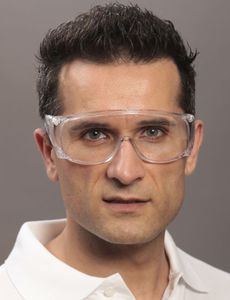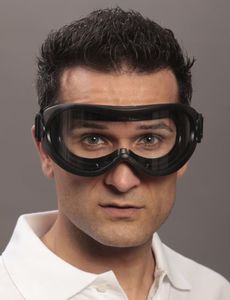
Chemical protection protective visor k1 plus
Add to favorites
Compare this product
Characteristics
- Function
- chemical protection
Description
Product information
• DIN EN 166 1 3 - S
• full protection of the complete face area and unlimited view
• robust plastic design
• maximum comfort due to low weight (approx. 150 g)
• visor is made of approx. 1,00 mm high-quality polycarbonate
• visor with special comfort bends
• shatterproof and scratch-proof
• upward-folding and unbuttoning
• resistant to acids and bases
• also for fastening to helmet
Product designation: Face Shield k1 plus
Applied standard: DIN EN 166 (DIN = German Institute for Standardization)
Utilization: The face shield is applicable for the protection against liquids (liquid drops and splashes of drops for example acid and bases). It can be carried in connection with half masks or filtering half masks. The scope of protection is determines by the product information, technical standards and valid application rules.
Description: The face shield encloses the visual field and can be worn with or without protective helmet.
Materials:
Holding device of shield Plastic (ABS)
Snap fastener Metal
Head strap Polyethylene
Foam Polyurethane
Head harness Textile elastic band
Washer Plastic (SBR)
Screws / Knurled nut Polyamide
Lens Polycarbonate (PC)
Colour of frame: white
Lens thickness: 1,0 mm
Lenses colour: clear
Weight: approx. 145 g
Marking:
Trade mark of manufacturer (LOGO)
Product designation
Applied standard
CE-Identification
Optical class
Operating range
Abbreviation for mechanical firmness
Marking explanation: 1 Optical class (particularly high requirement of the visual efficiency)
3 Operating range – liquids (liquid drops and splashes of drops)
S Mechanical strength (improved mechanical strength)
Catalogs
Face Shield k1 plus
1 Pages
Related Searches
- Fabric clothing
- Cotton clothing
- Mechanical protection safety gloves
- Work safety gloves
- Filter with cartridge
- Chemical protection protection gloves
- Work suit
- Face mask
- Handling safety gloves
- Unisex coveralls
- Nitrile glove
- Protection glasses
- Filtering respirator
- Disposable face mask
- Polymer safety glasses
- Gas pre-filter
- Fabric coveralls
- Polycarbonate protection glasses
- Fabric safety gloves
- Hard hat
*Prices are pre-tax. They exclude delivery charges and customs duties and do not include additional charges for installation or activation options. Prices are indicative only and may vary by country, with changes to the cost of raw materials and exchange rates.








